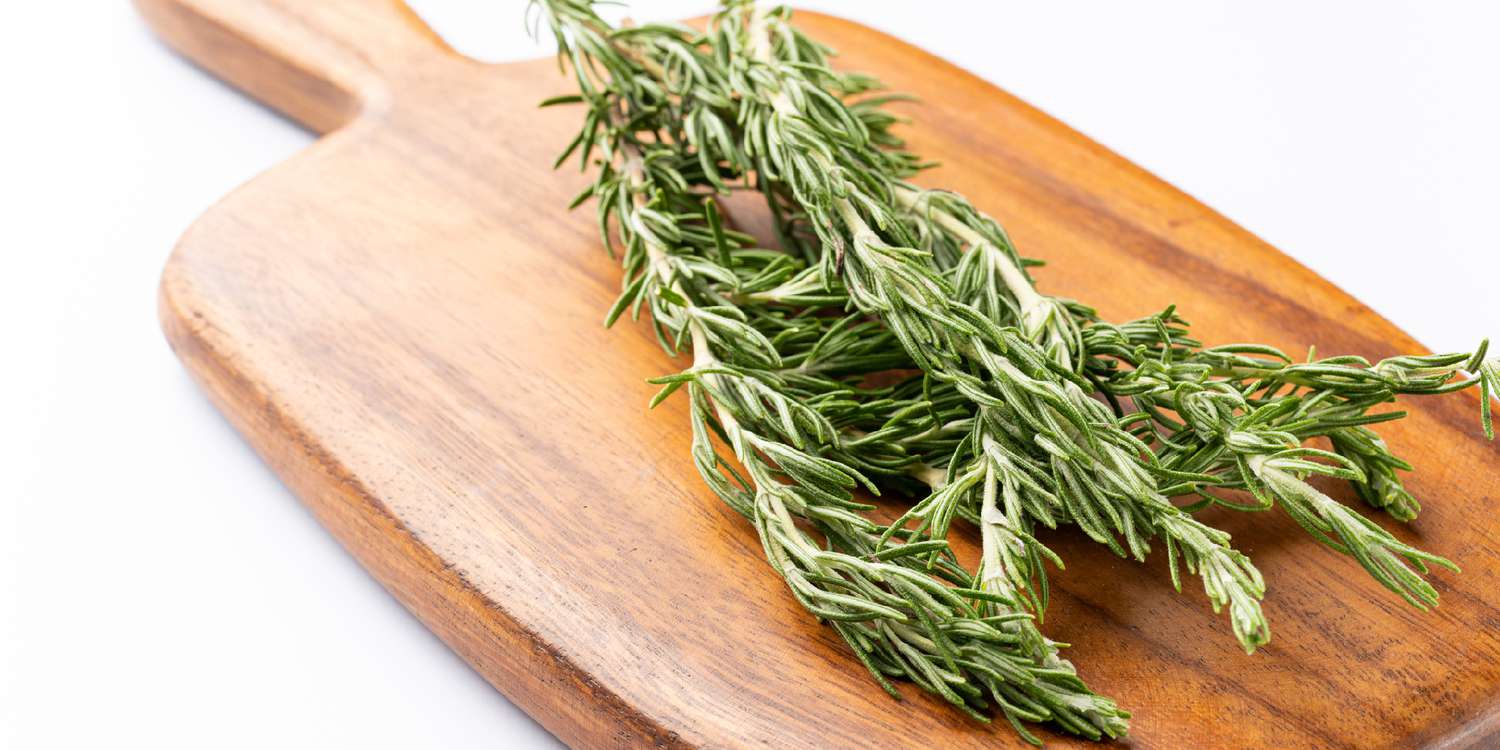With rosemary being ever present in all manners of cool/cold weather seasonal cooking and baking, it would be a shame for even one stalk to go to waste. That said, it’s not like any one recipe uses a ton of it, so working your way through your stash is a marathon, not a sprint. Here are a few tips to keep your stock in check.
How Long Does Fresh Rosemary Last?
Fridge: 10-14 days in bags, possibly up to 4 weeks in a jar of water
Room temperature on the counter: 2-3 weeks if in a jar of water
In freezer: 4-6 months
How to Store Rosemary in the Fridge
Storing fresh rosemary in the fridge is the best choice. There are two ways you can do this: in a bag or in a jar. The jar method will keep the herb fresher for longer, if you can spare the space.
To store it in bags, lay the sprigs side-by-side on a damp (not wet) paper towel then wrap them up and slide the packet into a zip-top bag. Remove as much air as possible, seal, and lay it to rest in your crisper drawer (the same one you use for lettuce). You can also use a sealed storage container instead of a bag. Swap out the paper towel as needed, when it gets dry or discolors.
To store it in a jar of water, trim the ends of the stems first. This is necessary for store-bought rosemary because the ends actually ‘heal’ a bit after harvesting and during transportation and you want to ensure the water will get into the stalks. Place the stems into roughly one inch of water vertically in the jar and cover the jar loosely with a plastic bag or wrap.
If the sprigs fit fully into the jar, you can close the lid. Store the jar on a shelf or in the refrigerator door. Change the water when it gets low or discolors.

Get the recipe: Black Olive and Rosemary Focaccia
Leaving Rosemary on the Counter
The jar of water method works wonderfully on the counter as well; it just won’t last quite as long. Make sure to keep an eye on the water and refresh it when it gets low or starts to discolor.
If you leave your rosemary on the counter on its own (as in without the jar of water), you’re opting to dry it. It won’t be as aromatic, but dried rosemary is great to have around for cooking and another solid way to ensure all your rosemary gets used.
The fastest way to dry rosemary is to use a dehydrator (if you have one) or to lay the sprigs on parchment-lined baking sheets and place them in your oven on the lowest setting until they’re fully dried out. Once cool, remove the dried leaves from the stems and store those leaves in a sealed container, or grind them into a powder using a mortar and pestle or spice grinder.
How to Freeze Rosemary
Start with washed rosemary that has been allowed to dry completely. Snip the sprigs into smaller pieces if needed and place them in a zip-top bag in a single layer, remove as much air as possible, and seal. Freeze the bag flat in the freezer first, so the sprigs won’t clump together, then store vertically to conserve space.
If you’d rather freeze the leaves individually, off the stem, spread them in a single layer on a parchment-lined baking sheet and freeze them like that first, before piling them in zip-top bags for storage. This will ensure they don’t clump together, and you can grab just what you need when you need it for cooking or baking. These individually frozen leaves are especially great for marinades, soups, and stews.
How to Tell When Rosemary Has Gone Bad
Rosemary past its prime lets you know. The leaves turn dark and brittle and might become slimy (especially if stored in a bag). The stalk may wilt, and the stem may start to mold. Rosemary has a distinct, woodsy, evergreen/minty aroma and it will smell off, dull, or simply bland if it’s time to toss.
Related:
- What Is Herbes de Provence and What’s a Good Substitute?
- How to Maximize the Flavor of Dried Herbs
- How to Trim Your Herbs — and Why You Need To




